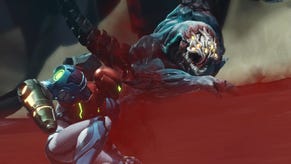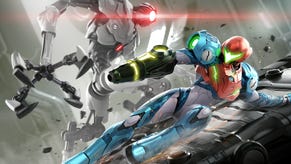Metroid Dread review: a strong adventure that’ll delight fans
The latest adventure of Samus has its share of tense moments and frustrations, but it’s anything but dreadful.
How much did you like Metroid: Samus Returns, the Nintendo 3DS Remake of the oft-maligned second entry in the series? Your answer to that question is important - because it’ll probably determine just how much you enjoy Metroid Dread, the latest entry in the franchise and the much-ballyhooed conclusion to the ‘main’ Metroid story arc that’s been told in the 2D entries of the series.
The lineage between the two is obvious. Both are developed by Spanish studio MercurySteam in collaboration with Nintendo’s prestigious EPD development unit, and when you begin playing Dread, the direct thread from one game to the other is clear. Most prominent is that Samus retains her physical counter move that made its debut in the Metroid 2 remake - but in terms of how it generally moves and handles, Dread matches up closely to its development predecessor.
In other ways Dread is quite different, however. In fact, I’d argue that it draws from three past Metroid games in almost equal measure. The combat and how the game feels is from Samus Returns. From Super Metroid comes a wider sense of non-linearity, setting you loose with little direction to figure out what to do next, with no waypoints (other than those you set yourself) or form of map navigation other than using your damn eyes. Yes, there are also provisions made in the game’s design to allow players to break free of the ‘intended’ sequence of events. Finally, the flow of the game most closely resembles Metroid Fusion, the title that’s chronologically immediately before Dread in a story sense.
The game gets its title from the sense of Dread meant to be inspired by being hunted - a tension developed in Fusion and meant to be enhanced here. Enter the E.M.M.I., near-indestructible robots that hunt Samus through the bowels of the planet ZDR. Moment-to-moment, Dread is like any other 2D Metroid, following the template set by the original game and honed to perfection in Super - but once you enter an area where the E.M.M.I. are loose, the equation changes significantly.
Conceptually, the E.M.M.I. are brilliant. Much of Metroid is about slowly exploring, unearthing secrets and new paths - but that’s far more difficult when you’re being stalked. Thus the titular Dread is present - though perhaps for the wrong reasons. Aside from a tiny window to counter and briefly stun them, the E.M.M.I. are functionally unbeatable and coming into contact with them at all results in Samus’ capture and an instant game over. Instead, the game advises you to at first run, and then later sneak - with Samus getting hold of some cloaking technology, invisibility key to getting through the enclosed areas where each E.M.M.I. resides. So, yeah. The concept is great. Can you sense a but coming?
Great concept aside, the execution of this idea executes wildly between great and very, very frustrating. The feedback the game gives about what your robotic foes know is great - little animated emanations clue you in that you’ve made enough noise to attract attention, and the thrill of successfully escaping is brilliant. But the instant kill is a draining pain, especially when you end up criss-crossing back and forth across an E.M.M.I. inhabited area multiple times while trying to uncover the next path forwards.

Additionally, the E.M.M.I. just aren’t that scary? Perhaps it’s down to their design - personality-free and robotic in nature. Perhaps it’s a difference in animation, where 3D often contains less nuance than 2D. Whatever the reason, these stalkers just aren’t nearly as scary as the SA-X, the terrifying foe in Metroid Fusion. The game keeps telling you how dangerous and frightening the E.M.M.I. are, but really they’re just an inconvenience. That feels a little of a missed opportunity after the tremendous execution of the SA-X and Metroid’s obvious Alien inspirations. This game is called Metroid Dread because that was the feeling series steward Yoshio Sakamoto wanted to evoke. Ultimately, he probably should’ve swapped the titles of this and Metroid Fusion - as Fusion was far more efficient at manufacturing Dread and setting the player’s pulse racing.
Anyway, as you clear out the planet, you will eventually unlock ‘mysterious energy’ that can be spent to fire a powerful shot to kill a single one of these stalkers - so eventually you can explore these zones unimpeded. Incidentally, the order in which you do this might be a big determiner in speedruns and sequence breaks, as Samus obtains certain key powers upon defeating certain E.M.M.I. - each is color-coded and has a unique ability Samus can obtain from them.
Much of the rest is par for the course Metroid. You work your way through the planet, unlocking multiple areas that you then use elevators, shuttles and teleporters to travel between. As you earn new powers, there’s benefits to backtracking to find new bonus items to power Samus up hidden away in previously traversed areas. Sometimes, a natural back-and-forth will be required for progression too - though I reached the final boss having picked up only around 40% of the items, at which point I backtracked to go on an exploration and unlock bonanza.
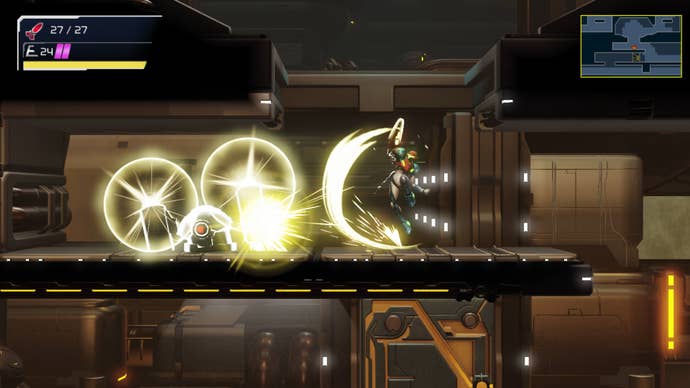
It’s fair to say that Metroid is one of Nintendo’s most ‘hardcore’ focused gaming franchises - and Dread leans into that. It can be surprisingly unforgiving and difficult sometimes, especially in boss battles - I bounced off some for double-digit attempts before nailing their patterns and understanding how to counter them, and I know others who fared much worse. Curiously, a few boss encounters are also ‘scripted’ - meaning that once you reach a certain point and start the battle, it’s impossible to backtrack to better prepare or grab upgrades - you just have to keep trying.
In fact, it generally feels like this game is balanced in such a way that backtracking to grab loads of health power-ups will only help you so much - later enemies do ridiculous gobs of damage. However, this leveling up of enemies also coincides with when the E.M.M.I. become less of an inherent threat. I suppose the point is that ZDR remains permanently uninviting. By the time you hit a power fantasy of stomping everything, the adventure is almost over.
In that sense, I wonder how Metroid Dread might fare as somebody’s first foray into the adventures of Samus Aran. There’s an extended sequence at the start of the game to get you up to speed, but at the same time the story will likely really only land with a decent amount of knowledge of the series. Combine that with how unforgiving the game can be - to the point of feeling a little unfair, sometimes - and I’d say this isn’t one for newcomers.
In other ways, however, Dread feels like one of the most accomplished Metroid entries. The characterization of Samus is sublime; the purposeful way she moves in both cutscenes and gameplay, and how when she rarely breaks her silence, it means something. Samus often gets lumped in with fellow power armor wearers Master Chief and Doom Slayer, but let’s be real: she’s cooler than the pair of them combined, at least when she’s proper, old-school Samus, not babbling or asking idiot dudes for permission to save her own life, like in Other M. Similarly, the silent world building of Dread is pretty excellent - there’s a logic to the way its world works, and the discrete areas are linked in ways that feel natural. While there’s inevitably some stretches of logic in order to serve game design ends, it’s a planet that makes a good degree of sense, which isn’t always true in this series.
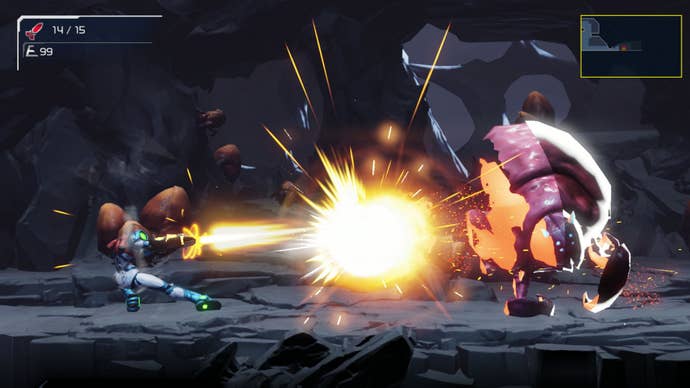
Where Dread falls flat, it feels like it does so in service of genre tropes and pieces of eighties design deliberately preserved within this series. Open-ended design is brilliant, but scouring almost fully-complete maps for one bombable block to progress can be painful. The same can be said of bosses that are just relentless and unforgiving until you understand the one thing that trips them up, especially when they then return later in the game in a more powerful form. But these things are largely true of the Metroid series as a whole - and in that sense, Dread feels a fitting finale to the 2D Metroid saga, at least for now. It also feels like MercurySteam has solidified its role as a custodian for this branch of the series, and I hope to see them return for yet another shot. A Samus Returns port for Switch wouldn’t go amiss either.
Metroid Dread is likely to give those that have been counting down the days to its release exactly what they want: a thrilling experience in line with what they loved about past games. There are original ideas here - but they’re better considered as evolutions of what came before rather than anything groundbreaking. There’s stumbles here and there with the difficulty and progression signposting, but all of that feels very Metroid. Dread is no Super Metroid, but that game is a stone-cold all-timer. Putting that game aside, Dread is up to the series standard, and is well worth a look.
Disclaimer: Tested on a Nintendo Switch OLED model. A copy of the game was provided by the publisher.
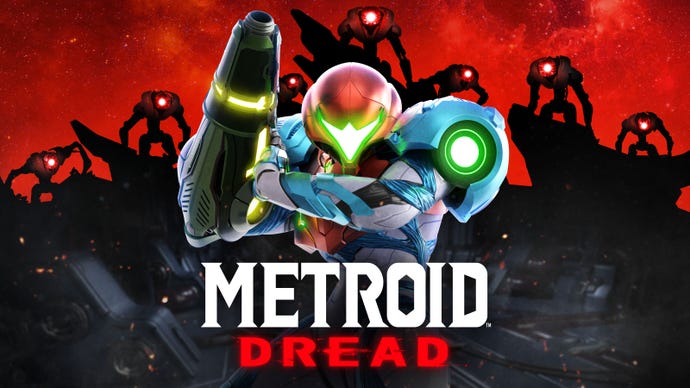


.jpg?width=291&height=164&fit=crop&quality=80&format=jpg&auto=webp)


